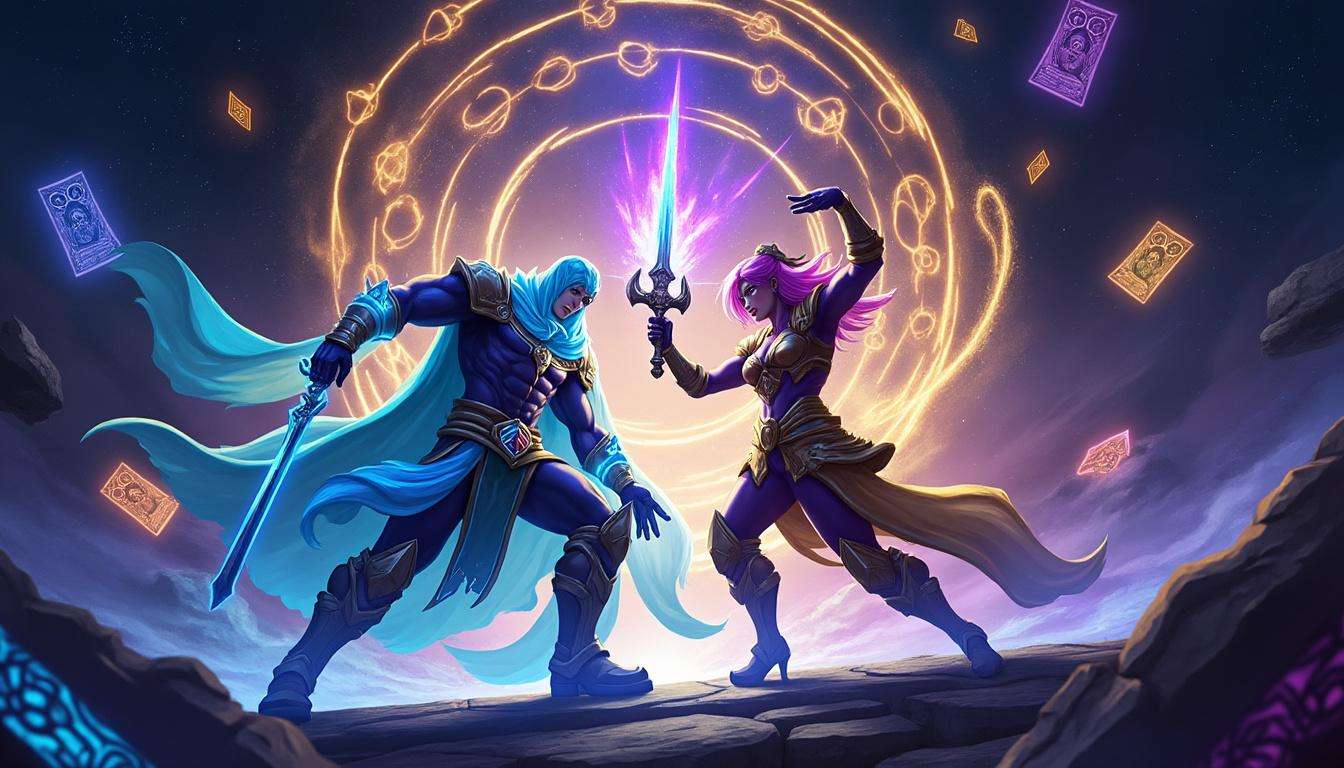Riftbound arrived as Riot Games’ bold entry into the physical Trading Card Game space, promising a fresh take on the League of Legends universe and drawing inevitable comparisons to Magic The Gathering and other TCG giants. Pro player Riley tested prototypes, demo kits, and full matches to assess whether this new collectible experience can match the staying power of established titles like MTG. This piece breaks down mechanics, deck identity, balance concerns, and market prospects for a clear view on long-term viability.
Brief: Riley’s hands-on sessions highlighted strengths in champion identity and design, but exposed questions about balance, game length, and product availability that will shape Riftbound’s future.
Riftbound TCG First Impressions and Core Mechanics
Riley’s first matches showed that Riftbound feels immediately familiar to fans of tabletop card games while retaining distinct League-themed systems. Players choose a Champion Legend, a Chosen Champion, and a Battlefield, then fight to capture points by winning Showdowns; the first to eight points wins.
- Key elements: Champion Legends, Battlefields, Runes (resource system analogous to lands).
- Win condition: capture and hold Battlefields to reach the eight-point threshold.
- Play modes: 1v1 and team variants; matches can scale in length with more players.
Riley noted that while Riot marketed Riftbound as “easy to learn”, mastery demands time—players with Magic or digital card game backgrounds will adapt faster, but newcomers need structured learning. This system clarity is a real plus for competitive play and community events.
Champions, Battlefields and Win Conditions in Riftbound
Designers use champions to convey identity: Lux plays as a spellburst control archetype, Garen acts as a resilient frontline, and Master Yi rewards solo skirmishes. These roles make decks feel like extensions of the characters rather than generic card collections.
- Champion pairings: Champion Legend + Chosen Champion for layered synergies.
- Battlefields: each offers unique traits that reshape strategy and board placement.
- Scoring: units on Battlefields resolve Showdowns to earn capture points.
Riley’s key takeaway: champion authenticity is a major win for League of Legends fans, and clear win conditions make competitive formats approachable for tournament organizers. For players wanting a concise primer, see this introduction to the League of Legends trading card game.
Deck Design, Balance and Demo Kits
The Proving Grounds demo kits (Annie, Garen, Lux, Master Yi) were curated to showcase archetypes, but Riley observed uneven power curves. Some decks accelerate hard then fizzle; others scale into crushing late games. Riot’s tuning choices in demos emphasize teaching different playstyles, not final competitive balance.
- Demo intent: expose new players to archetypes rather than define meta balance.
- Balance concerns: early access Lux and Jinx demo behavior felt stronger in short matches.
- Examples: Jinx demos were explosive early but susceptible to long-game decks like Volibear.
Riley also ran multi-player sessions that stretched match times; team games can exceed 30–60 minutes depending on deck composition. For release context and product rollout issues that affected availability, Riot addressed community questions in public notes and interviews—read more about Riot’s stance here: Riot acknowledged concerns.
Collectible Cards, Rarity Issues and Supply Chain Notes
Origins, Riftbound’s first set, sold out quickly in many stores and online, creating a heated second-hand market. Riley saw buying frenzy and short supply affect local play scenes and event planning. This scarcity poses questions about long-term health if restocks are slow.
- Supply signals: Origins sold out across many retailers at launch.
- Collector concerns: reports of missing rare pulls and distribution frustrations.
- Community effect: pre-order demand drove speculation, influencing secondary prices.
For coverage of the product launch, pre-order trends and the broader market response, consult reporting on the English release and pre-order activity: English release details and pre-order frenzy. The recent community discussion around rare pulls is documented in this piece on rare cards disappointment.
Longevity, Market Position and Comparison with MTG
Riftbound enters a saturated market dominated by Magic The Gathering, but it also benefits from the global reach of Riot Games and the cultural momentum of Arcane. Riley believes Riftbound will carve a stable niche among licensed Collectible Cards rather than dethrone MTG.
- Competitive landscape: MTG’s depth and infrastructure remain dominant.
- Riot advantages: strong IP, organized play pathway, and cross-promotional potential.
- Risks: product shortages, balance tuning, and long match times could limit growth.
Riley predicts Riftbound will sit alongside other licensed titles such as One Piece and Final Fantasy TCGs, offering a robust alternative for League of Legends fans and tabletop players. For further perspective on how Riftbound reshapes the MTG experience, see this analysis: how Riftbound reshapes the MTG experience.
Organized Play, Community and Paths Forward
Riot has outlined an organized play roadmap with local to world championship progression, which Riley sees as vital for longevity. Strong grassroots scenes in hobby stores and esports venues will determine whether Riftbound becomes a staple or a niche curiosity.
- Organized play: clear local-to-global paths are planned by Riot Games.
- Community action: pod events and demo nights encourage new players.
- Developer response: ongoing balance patches and product restocks are essential.
For readers tracking product line announcements and community initiatives, Riot’s lineup and expansions are catalogued in release summaries and champion lists; additional reading includes this overview of confirmed champions and product news: complete list of confirmed champions and the broader launch timeline here: release date and product lineup. The insight: organized play will be the deciding factor in whether Riftbound sustains momentum beyond initial hype.

